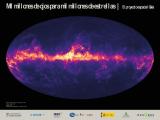Archivo de noticias y eventos
601 - 650 de un total de 2398
También puede acceder a la lista de noticias publicadas en los medios relacionadas con el Instituto de Astrofísica de Andalucía - CSIC.
Pages

|
18/03/2021 - 12:30
SO Webloquio: Polarimetry in the planetary sciences The past few decades have been characterized by the rapid development of astronomical polarimetry that has resulted from new polarimetric instrumentation, new techniques and new theories. Such advances have aided the exploitation of polarimetry in areas ranging from solar system bodies to exoplanets and allowed the development of completely new fields of polarimetric exploration such as cometary nuclei, transneptunian objects, protoplanetary and... Dr. Ricardo Gil-Hutton |

|
18/02/2021 - 12:30
SO Web-Colloquia: The Search for Advanced Extraterrestrial Civilisations via Anomalies in Astronomical Survey Data Energy-intensive civilisations are likely to have a significant impact on both their local and extended environments – we already see evidence for this here on Earth. Advanced technical civilisations may reveal themselves to other civilisations by introducing anomalous signals into astronomical data. Artificial radio signals are perhaps the best known example but there are also many other possibilities e.g. excess infra-red emission due to waste... Dr. Mike Garrett |

|
11/02/2021 - 12:30
SO Web-Colloquia: The influence of the star-forming environment on planetary systems Planet formation occurs at the same time as star formation, and so the environments in which stars are born are also the birthplaces of planetary systems. Star forming regions are very dense, meaning that encounters between stars and planetary systems are common. Furthermore, the intense UV radiations fields from intermediate and massive stars can truncate, or destroy protoplanetary discs. In this talk, I will describe the detrimental effects of... Dr. Richard Parker |
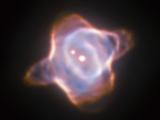
|
03/12/2020
La nebulosa de la Mantarraya, la más joven conocida, se apaga Observaciones con el Telescopio Espacial Hubble muestran cómo esta joven nebulosa ha perdido brillo y cambiado de forma en apenas dos décadas |
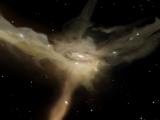
|
30/11/2020
MHONGOOSE comienza a estudiar el débil gas atómico que rodea a las galaxias, clave en su evolución MHONGOOSE, un proyecto de legado del radiointerferómetro MeerKAT, precursor sudafricano del Square Kilometre Array, produce sus primeros resultados. Se han obtenido en su fase preparatoria, anticipando así la ventana que abrirá a la comprensión de la formación y evolución de las galaxias |

|
26/11/2020
El IAA-CSIC participa en la Noche Europea de l@s Investigador@s 2020 Granada presenta más de ciento cincuenta actividades online en su Noche de Investigadores más innovadora |

|
04/02/2021 - 12:30
PHANGS-Halpha : A narrow-band survey of nearby star-forming galaxies observed with ALMA This work collects a representative sample of star-forming galaxies as part of a major effort the Physics at High Angular resolution in Nearby GalaxieS (PHANGS) collaboration has been making to build surveys with matched cloud-scale resolutions. Observations resolved at 50–150 pc are necessary to isolate individual Giant Molecular Clouds (GMCs) and HII regions to probe different phases of star formation from cold gas to stellar clusters. In this... Dr. Alessandro Razza |
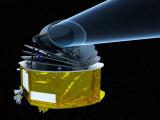
|
23/11/2020
La misión Ariel comienza su fase de ejecución La misión, desarrollada por la Agencia Espacial Europea (ESA) y con lanzamiento previsto para 2029, ha pasado de la fase de estudio a la de implementación, que implica la selección de un contratista industrial para construir la nave espacial. El Instituto de Astrofísica de Andalucía (IAA-CSIC) participa en Ariel a través de dos de sus grupos de trabajo científicos |

|
25/03/2021 - 12:30
SO Webloquio: Searching for the formation mechanisms of brown dwarfs New generation of Submillimeter facilities in the North of Chile, like the APEX antenna and the Atacama Large Millimeter/submillimeter Array (ALMA), offers for the first time the possibility for studying the formation of stars, brown dwarfs, and planets with unprecedented sensitivity and angular resolution in the millimeter/submillimeter regime. The formation of Brown Dwarfs (BDs) is a debated topic of research. The most widely discussed... Dr. Itziar de Gregorio Monsalvo |

|
21/01/2021 - 12:30
SO Web-Colloquia: Osiris-Rex: results on a mission to understand planetary systems In September 2016, the NASA OSIRIS-REx spacecraft was successfully launched from Cape Canaveral Air Force Station, in Florida. That was the beginning of an amazing journey to reach near-Earth asteroid Bennu, collect a sample of material from its surface, and bring it back to Earth in 2023. The so-called “Touch-And-Go” maneuver or TAG, took place on October 20, 2020 and the sample collector head has been safely placed into the Sample Return... Dra. Julia de León |

|
12/01/2021 - 12:30
SO Web-Colloquia: Primordial black holes, gravitational waves and dark matter More than twenty years ago, we predicted that massive primordial black holes (PBH) would form via the gravitational collapse of radiation and matter associated with high peaks in the spectrum of curvature fluctuations, and that they could constitute all of the dark matter (DM) today. In 2015, we predicted the clustering and broad mass distribution of PBH, which peaks at several Msun, and whose high-mass tails could be responsible for the seeds... Dr. Juan García-Bellido |

|
17/12/2020 - 12:30
SO Web-Colloquia: On the formation of stellar clusters In this presentation, I will show how the analysis of the spatial distribution of young stars (YSO) and its comparison to the core population can reveal stellar formation episodes in star forming regions, and help us understand the fragmentation process. I will focus in particular on two very different regions: the relatively massive cluster NGC2264 and the Taurus association. Our recent study of the clump and YSO populations in NGC 2264... Dra. Estelle Moraux |

|
10/12/2020 - 12:30
SO Web-Colloquia: Stellar population gradients and kinematics of ETGs as revealed by MaNGA In this talk I will summarise the findings presented in a series of four papers dedicated to the study of early type galaxies (ETGs) with integral field spectroscopy (IFU) from the MaNGA survey. The formation channels and mass assembly of ETGs is still a matter of debate in current galaxy evolution models. The combined analysis of galaxy kinematics and stellar population gradients (age, metallicity, alpha-enhancement, initial mass function -IMF... Dra. Helena Domínguez Sánchez |

|
25/02/2021 - 12:30
SO Web-Colloquia: The exoplanet revolution The wealth and diversity of planetary systems that have now been detected modified our perspective on planet formation as a whole and more specifically our place in the Univers. It also present an opportunity of historical perspectives and an irresistible call to look for signs of life on these new worlds as a way to explore our own origins. I will introduce the audience with the challenges and recent progresses in this new field of research and... Dr Didier Queloz |

|
12/11/2020
El investigador del IRyA Jesús Toalá, doctorado en el IAA-CSIC, recibirá la Cátedra de Investigación Marcos Moshinsky Otorgada por el Instituto de Física de la UNAM, se concede a jóvenes y prometedores científicos para el desarrollo de un proyecto de investigación en su área de interés |

|
26/11/2020 - 19:00
El Primate simbólico. Cómo el lenguaje y la cultura nos hicieron humanos Los humanos nos separamos de nuestro pariente más próximo, el chimpancé, hace unos siete millones de años, un tiempo relativamente corto desde el punto de vista de la evolución. Es evidente la continuidad biológica con el chimpancé en numerosos aspectos fisiológicos y conductuales; es igualmente evidente la brecha cognitiva entre ambas especies. En esta charla trataré de hacer un esquema del proceso de hominización basado en los datos... Pablo Rodríguez Palenzuela |

|
14/01/2021 - 18:00
SO Web-Colloquia: The Blanco DECam Bulge Survey The Blanco Dark Energy Camera (DECam) Bulge survey is a Vera Rubin Observatory (LSST) pathfinder imaging survey, spanning ∼ 200 sq. deg. of the Southern Galactic bulge, −2◦ Dr. Michael Rich |

|
03/12/2020 - 12:30
From direct imaging to gravitational waves: tracing the life of gas giant exoplanets In two decades, the field of exoplanet science has undergone nothing short of a revolution. With such a variety of planetary systems detected, the next step in exoplanet research is to characterise the properties of these systems. In this talk I will focus on “life and adventures” of gas giant exoplanets, and present how future space missions such as JWST, ARIEL and LISA will help us understand the nature, formation and evolutionary history of... Dr. Camilla Danielski |

|
05/11/2020
Se publica el nuevo catálogo del cartografiado J-PLUS, con casi veinte millones de objetos celestes El Instituto de Astrofísica de Andalucía (IAA-CSIC) participa el proyecto, coordinado por el Centro de Estudios de Física del Cosmos de Aragón (CEFCA) |

|
28/01/2021 - 18:00
SO Web-Colloquia: Vera C. Rubin Observatory: A Big Data Machine for the 21st Century Vera C. Rubin Observatory and its Legacy Survey of Space and Time (LSST) boasts an 8.4-m diameter mirror, a camera the size of a bus, and a 3.2-gigapixel detector. It will image the entire southern sky from Chile every few nights beginning in 2023, and enable astrophysics on all scales, from near-Earth asteroids to cosmic acceleration. With nightly data volumes around 20 TB and a final data release of 15 PB, LSST is ushering in a new paradigm... Dr. Meredith Rawls |

|
04/11/2020
Se detectan rápidos estallidos de radio en nuestra Galaxia La identificación de una fuente productora de ráfagas de radio de muy corta duración en nuestra propia galaxia, la Vía Láctea, se presenta en tres artículos en la revista Nature. Los estudios apuntan a que un magnetar, una estrella de neutrones con un campo magnético muy intenso, se hallaría tras este fenómeno |
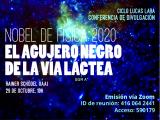
|
29/10/2020 - 19:00
Nobel de Física 2020: el agujero negro de la Vía Láctea Andrea Ghez y Reinhard Genzel fueron galardonados con el Premio Nobel en Física 2020 por su descubrimiento del agujero negro masivo en el centro de la Vía Láctea. En mi charla repasaré la historia de su trabajo de investigación desde un punto de vista en primera línea (por haber trabajado estrechamente con los dos investigadores en este tema). Explicaré los métodos y medidas que usaron y la fuerza de sus resultados. Rainer Schödel |
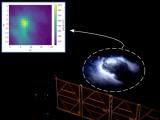
|
23/10/2020
Confirman la existencia de un nuevo fenómeno eléctrico en la atmósfera: destellos azules producidos por descargas eléctricas frías A diferencia de los rayos, estas descargas eléctricas activan muy eficientemente ciertas reacciones químicas que pueden producir óxido nitroso y ozono, gases que contribuyen al efecto invernadero. El estudio, encabezado por investigadores del Instituto de Astrofísica de Andalucía (IAA-CSIC), ha sido posible gracias a los datos proporcionados por la misión espacial ASIM de la Agencia Espacial Europea (ESA) |
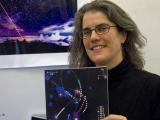
|
23/10/2020
El Centro Galáctico: un laboratorio único para el estudio de los agujeros negros Andrea Ghez, premio Nobel de Física 2020, impartirá una conferencia online sobre el centro de la Vía Láctea el próximo jueves 29 de octubre |
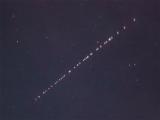
|
20/10/2020
SKA alerta del impacto de las megaconstelaciones de satélites La Organización SKA (SKAO) – que lidera la construcción del proyecto internacional del Square Kilometre Array (SKA) – ha realizado un análisis preliminar del impacto potencial de las actuales megaconstelaciones de satélites en sus telescopios. El análisis cuantifica este impacto e identifica las posibles formas de mitigarlo. |

|
18/01/2021 - 29/01/2021
Planets, exoplanets and their systems in a broad and multidisciplinary context Granada |
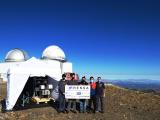
|
13/10/2020
El detector HENSA estudia los neutrones producidos por los rayos cósmicos desde el Observatorio de Sierra Nevada (OSN) El objetivo de estas medidas reside en la caracterización de la distribución de energías de neutrones producidos por rayos cósmicos, los denominados neutrones ambientales, durante el mínimo de actividad solar |

|
29/10/2020 - 17:00
Our Galactic Center: A Unique Laboratory for the Physics & Astrophysics of Black Holes The proximity of our Galaxy's center presents a unique opportunity to study a galactic nucleus with orders of magnitude higher spatial resolution than can be brought to bear on any other galaxy. After more than a decade of diffraction-limited imaging on large ground-based telescopes, the case for a supermassive black hole at the Galactic center has gone from a possibility to a certainty, thanks to measurements of individual stellar orbits. The... Dr. Andrea Ghez |

|
12/11/2020 - 12:30
SO web.Colloquio: GRAVITY+, all Sky, High Contrast, Milli-Arcsecond Optical Interferometric Imaging and Spectroscopy GRAVITY and the VLTI have transformed high angular resolution astronomy with groundbreaking results on the Galactic Center, active galactic nuclei, and exoplanets. The GRAVITY+ project will soon boost optical interferometry to the next level, opening up the extragalactic sky for milli-arcsecond resolution interferometric imaging, giving access to targets as faint as K = 22 mag, and providing ever higher contrast for the observation of... Dr. Frank Eisenhauer |
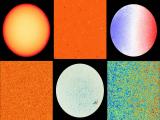
|
30/09/2020
Numero especial de A&A dedicado a Solar Orbiter Hoy se ha publicado un numero espacial de la revista Astronomy & Astrophysics dedicado a la misión Solar Orbiter (ESA, NASA) |

|
23/11/2020 - 27/11/2020
SOMACHINE Machine Learning, Big Data, and Deep Learning in Astronomy Granada |
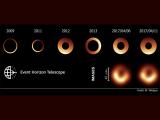
|
23/09/2020
El Telescopio del Horizonte de Sucesos muestra la “bamboleante” sombra del agujero negro de M87 Observaciones del Telescopio del Horizonte de Sucesos (EHT) desde 2009 a 2017 revelan una evolución turbulenta del agujero negro de M87. |

|
16/09/2020 - 17/09/2020
Scientific writing and presentation in Astronomy |

|
22/10/2020 - 12:30
We’ve never imaged the Sun’s surface from that close. Solar Orbiter will change that In February 10, 2020, Solar Orbiter, the new ESA's Sun-exploring mission built in collaboration with NASA, was successfully launched atop an ULA Atlas 5 rocket from Cape Canaveral in Florida. Equipped with ten instruments, six for remote sensing and four for in-situ measurements of the solar heliospheric conditions, it will get as close as 0.28 astronomical units (or 42 million kilometres) to the Sun in a mission that can last more than ten... Dr. David Orozco |

|
24/09/2020 - 12:30
The power of low activity black holes It is possible that most galaxies host a black hole at the centre, most of the time this being in a relatively quiescent state. The so-called low luminosity Active Galactic Nuclei are characteristic of this phase. These objects represent the vast majority of the active galactic nuclei (AGN) population in the near universe, and still the least conforming class with the standard AGN scenario. Their low luminosity is at odds with their often... Dr. Almudena Prieto |

|
09/09/2020
Se desvela el mecanismo molecular que conecta las emisiones oceánicas de yodo y la formación de partículas atmosféricas Se desvela el mecanismo molecular que conecta las emisiones oceánicas de yodo y la formación de partículas atmosféricas |
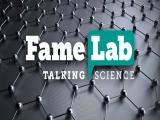
|
08/09/2020
Alicia Pelegrina, miembro del IAA-CSIC, obtiene el segundo premio en FameLab España 2020 Alicia Pelegrina, miembro del IAA-CSIC, obtiene el segundo premio en FameLab España 2020 |

|
19/11/2020 - 12:30
SO Web-Colloquia: Flaring on the Sun at all scales The Sun shows activity across a wide range of size and energy scales. We shall take a journey from the smallest scale events to the largest energy releases in the solar system. The energy release is due to the magnetic fields on the Sun and how they interact. Using EUV/UV spectroscopy different layers of the solar atmosphere can be probed in order to understand the physical processes that occur. The EUV imaging spectrometer onboard the Hinode... Dr. Louise Harra |

|
15/10/2020 - 12:30
So Web-Colloquia: The star formation process on cloud-scales in nearby galaxies Where do stars form and how is their formation regulated across galactic disks are two critical questions for our understanding of the star formation process. High angular observations of nearby galaxies allow us to sample the star formation process across entire galactic disks reaching now regularly the scales of the star-forming units, namely Giant Molecular Clouds (GMCs) and HII regions. Such data provide new insights on the molecular gas... Dr Eva Schinnerer |

|
08/10/2020 - 12:30
SO Web-Colloquia: Recent findings on nova explosions Nova events are the result of the interaction of low-mass binary systems. A compact white dwarf (WD) accretes material from an old and cold companion until a thermonuclear runaway takes place on its surface. Such explosive events can be considered the scaled-down siblings of supernova (SN) explosions, but its study has many advantages over SNe, as nova events are more numerous (some systems even exhibit recurrent explosions within decades) and... Dr. Toalá Sanz |

|
01/10/2020 - 12:30
SO Web-Colloquia: Following black hole evolution from z=5: mergers and outflows The growth and evolution of the most massive black holes, and their host galaxies, can be followed from z=7 and even earlier. The critical events that shape this evolution are major mergers, Eddington or super-Eddington accretion, violent star formation, and powerful outflows. I will present the results of a systematic study of 40 AGN at z~4.8 using Gemini, VLT, Herschel and ALMA. Our recent (2019) ALMA data allow a fresh look at major mergers... Dr. Hagai Netzer |

|
08/07/2021 - 12:30
SO Colloquium: TeV Halos and their connection to the Leptonic Cosmic Ray flux measured at the Earth The origin and propagation of cosmic rays (CRs) is one of the most important questions in astroparticle physics nowadays. CRs generated by known sources also serve as background to those putatively generated by more exotic phenomena such as dark matter. Apart from the known electrons of primary origin and positrons of secondary one, pulsars and sources powered by them are one of the main candidates to contribute to the total amount of CR... Dr. Rubén López-Coto |

|
25/06/2020 - 24/07/2020
Course on gender analysis in research |

|
20/11/2019 - 21/11/2019
III Course on Scientific Dissemination Techniques Granada |

|
18/11/2019 - 22/11/2019
Tenth Gammapy Coding Sprint Granada |

|
01/07/2020 - 17/07/2020
Introductory course to astronomy and astrophysics Granada |

|
25/02/2020 - 29/02/2020
Open Science Droplets Granada |

|
11/11/2019 - 15/11/2019
SUNRISE III Technical Meeting Granada |
